Today we have a review of a product we use in several of the STH lab racks. Specifically, the Schneider Electric APC AP7921B switched 1U PDU is designed to provide key functionality in our power infrastructure. Since we have used them for years and had three that were about to be deployed, we snapped a few photos and screenshots to do a short review of them. These PDUs cost significantly more than some other units specifically because they are remotely switched. In this review, we are going to show you the units.
Schneider Electric APC AP7921B Hardware Overview
The AP7921B is a 1U horizontal switch. With PDUs the form factors matter a lot. Our racks all have zero U PDUs that are mounted in the rear of each rack. This type of PDU is often meant to augment those zero U PDUs or other PDUs and that is how STH uses them.

The input is via a C19/ C20 connection and is designed for 200V-240V input at up to 20A (16A after being derated by 20% for North America safety standards.) This is quite different from some of the larger PDUs where there is a fixed power input line such as a NEMA L21-30P.
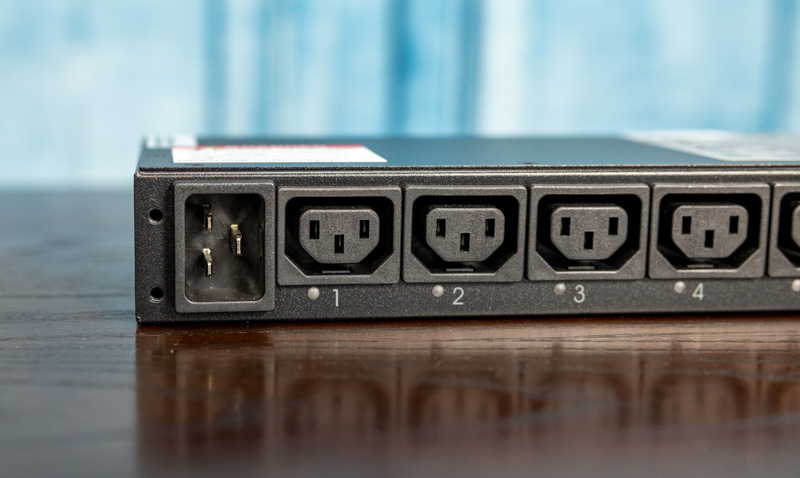
Instead of fixed power input, included in the package is an APC locking C19 to C20 cable (2.5m long.) One generally uses this cable to connect to another PDU. It also features a locking mechanism to prevent accidental removal. The key reason there is one can imagine a technician working in a rack and bumping a cable that causes the PDU and downstream devices to lose power.
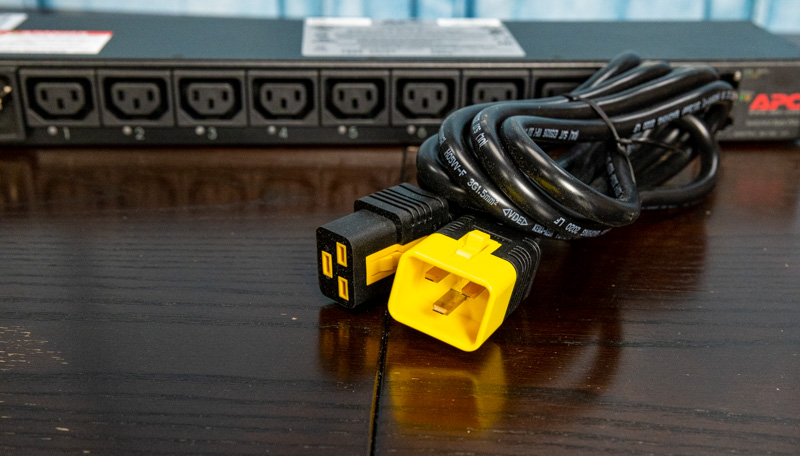
The main power ports are located on the front of the chassis. These are eight C13 ports that are designed for standard servers.
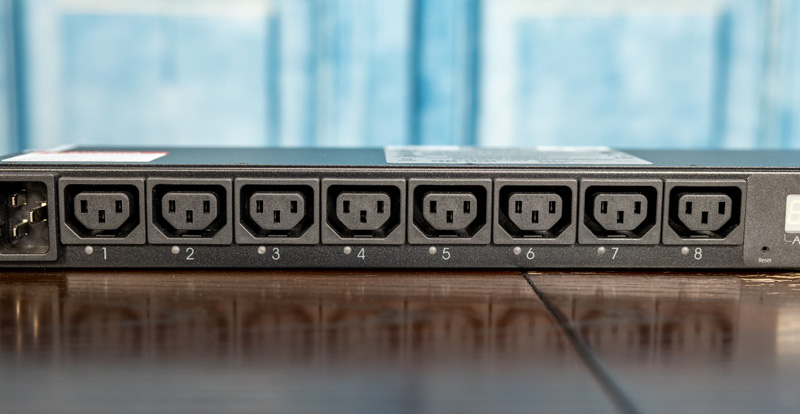
Each port is switched which means that the ports can be independently power cycled. One can also use features such as power cycling based on timers. This is perhaps the headline feature of this PDU.
Just as an example, here are two PDUs we use running pre-production servers in lab racks. Pre-production servers sometimes have firmware bugs that require hard resets. Hard resets are more challenging since one is rarely near the servers. As one can see here, we are color-coding cables from each PDU to each servers’ redundant power supplies to make tracing cables very easy in this rack.
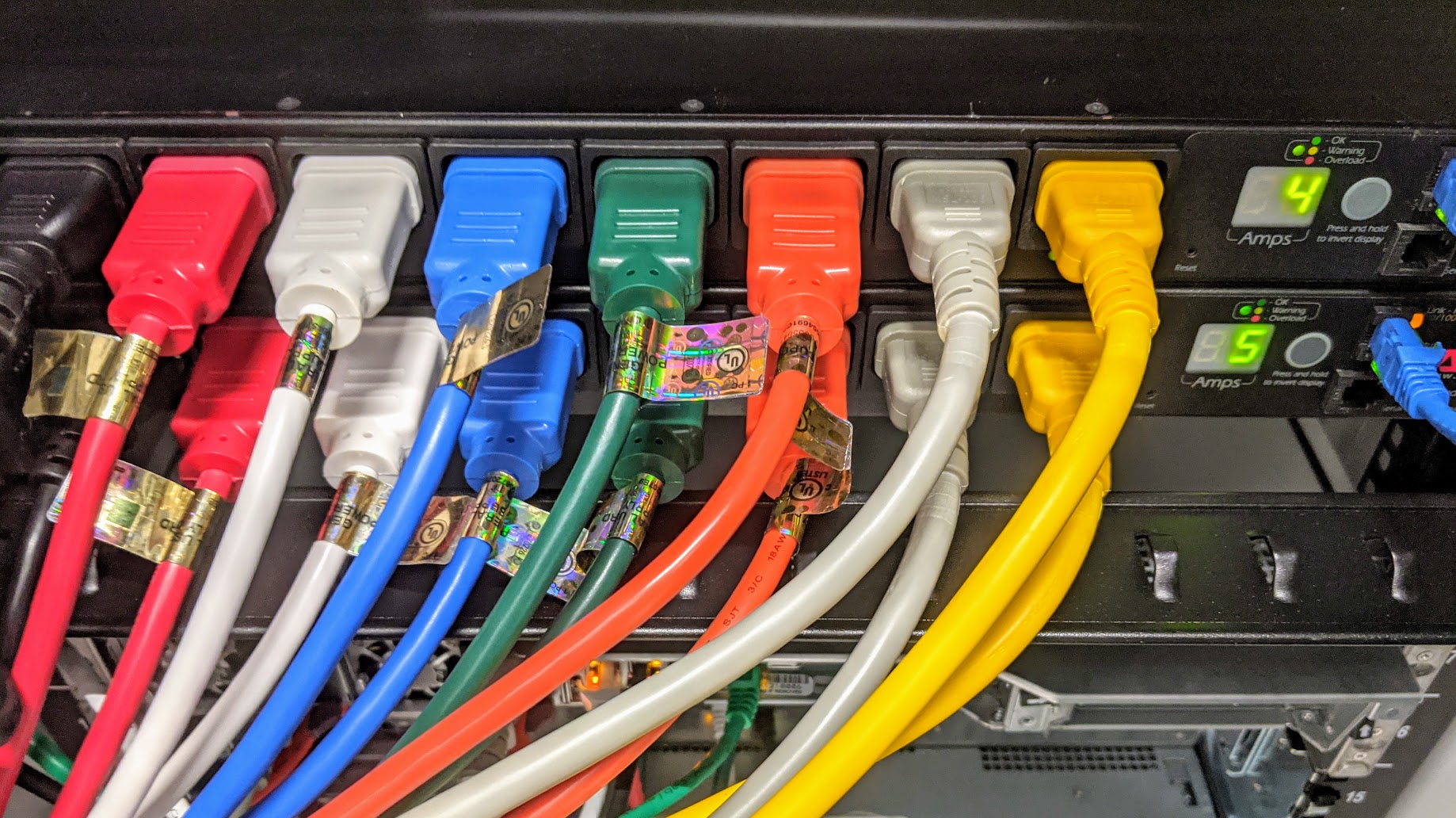
Other features are metering and management. One can see that this PDU also features a load meter on the front of the chassis via a simple LCD screen showing Amps being used. It is not the higher-quality interactive displays that we see on some of APC’s higher-end PDUs.
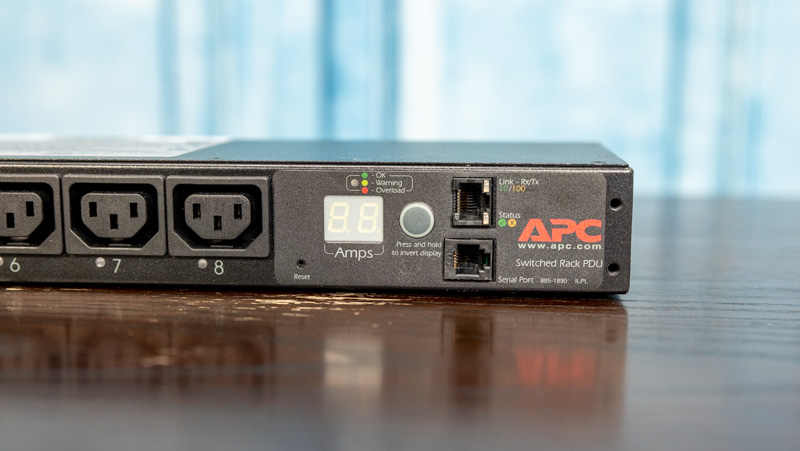
Other key features are that we have both a serial port as well as an Ethernet port. This PDU has a management interface that we will show later in this section.
On the other side of the PDU, we have a label and a grounding point. Some of these horizontal PDUs have ports on both sides to increase density. Since this is a short PDU and has a limited number of ports, it does not have rear ports.

One item we thought that was fun on this unit is that there is a “DANGER” sticker in English on the PDU. APC provides a complete set of stickers in other languages to replace this label or augment this label. In many jurisdictions having properly labeled electrical gear in certain languages is important so this is one of those nice touches, but also one that may not be used if you have only a US data center.
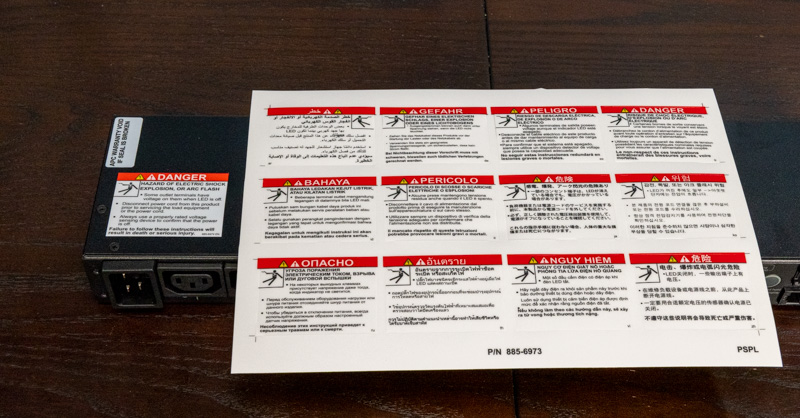
Included in the kit we have rackmount ears and also a cable tie-down bar. We have the bar installed in the picture with the colored power cables above on the bottom unit. In more permanent solutions than our lab racks, one can secure cables to this cable management bar.
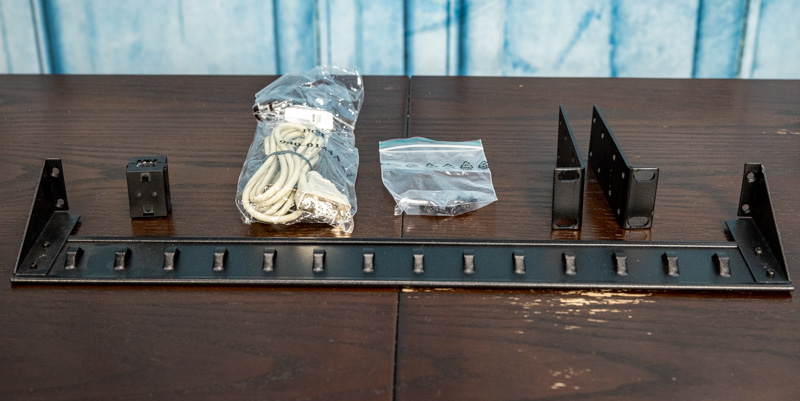
One item we normally do with hardware, even expensive servers is to open the unit to show the inside. Since we needed this to function, and we could not install this in a data center with a broken seal, we had a challenge.
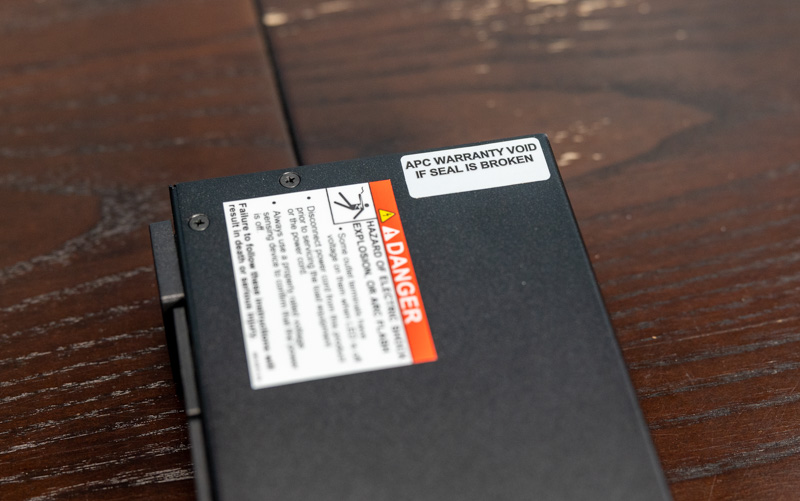
What we found was that there is a YouTube teardown of the discontinued/ previous APC AP7921 model which is likely worth looking at if you want to see what is inside.
We know this is not the best solution, but in this case, we only had access to the unit because it needed to be deployed.
Next, we are going to take a look at the management aspect of the PDU before getting to our final words.

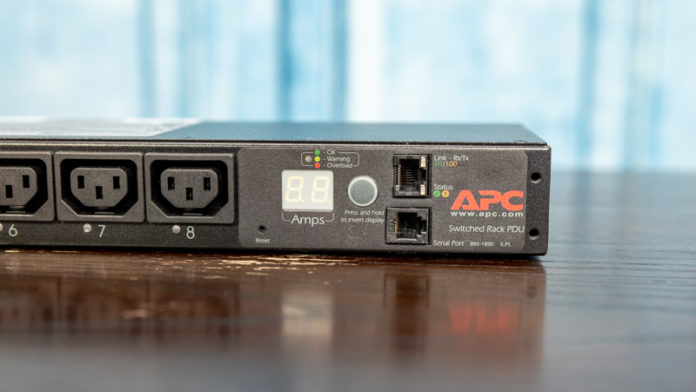
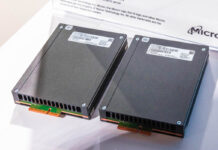


We don’t deploy anything without a switched PDU in place anymore.
RMMs sometimes choke on their firmware updates. Kill the PSU connections, wait a bit, power-up, and we’re good to go or going into recovery mode.
The same with pretty much anything in the rack.
All it takes is a couple instances where the power needs to be shut off and the unit has paid for itself.
To elaborate on the “20$ alexa smart plugs” for other with low budget home lab use etc.:
I now use zigbee smart plugs, and integrate them into home assistant. Even cheap 12€ Tuya OEM plugs can both power cycle, and monitor and protocol wattage output.
And with home assistant, one can automate, log, and create a dashboard web UI.
ofc nothing for a business or critical use case, but for low budget it is pretty amazing.
” we could not install this in a data center with a broken seal ”
Is this some kind of policy of the DC you are using or what?
Oh, and my advice is to get a Teflon knife, it will be very much worth it the next time you need to get into something without damaging a seal.
Merkeet,
I’ll be that guy to mention that the last thing you want to ever read is a loss adjusters report including your website review teardown in their list of reasons for not paying on their policy for the nearby cages of limit up configuration hardware that’s been damaged along with your rack in some kind of fire.
I appreciate the chances are skim but now we’re loading 7 decimals to the left of hardware per rack, I wouldn’t even want to be known for this kind of curiosity…
I’m guessing but the reason why these are expensive seems to me to be because every sku must share the overhead of a very solid sales and support organisation. It may only be a simple device, but in the event you encounter any problem, I would definitely want a responsive human being available to speak with in my time zone. I don’t know anything about the merger, but I sadly suspect that APC suffered from MBA theoretic ailments and made itself a acquisition target.
How come you only see eight languages on a sticker sheet clearly showing twelve languages?
I don’t get how these still do not provide per outlet power uasage..
No 1U APC product does.. or am I missing a product ?
Would love to see these tested in terms of ‘what happens when you pull the plug?’ I just don’t have a lot of faith in these things, I have paid big $$$ for a APC UPS with Fischer-Price build quality and it has never burned up but it is about 10x overrated.
A while back I thought about making a UPS that doesn’t suck and ran some numbers and wasn’t sure you could make one with lead-free batteries, DC output and other obvious improvements but I couldn’t see it being affordable.
Thus they promise a useless 5 minutes to shut down your computer (only needed because fsync lies) when 2 days to keep your dsl router, WiFi, and cordless phones makes for 21st century commas in an extended power outage actually makes your life better.
I’ve run a number of older generation units from APC over the years. While they do work, they eventually turn into white elephants unfortunately. Some older units I have can only be managed via HTTP or Telnet as APC never updated the units for newer ciphers so HTTPS and SSH needed to be disabled, there solution buy new hardware to correct for vulnerabilities.
Very funny device… 700$ for 8 relays with current consumption, i prefer 8 smart plug with measure of each channel for less than 100$ :-p
Is it normal for PDUs to have C13 outlets? So you have to buy some kind of C13 to C13 cables to hook up servers? The only PDUs I’ve seen had normal outlets, the same as wall outlets.
Yes, it’s very common for PDUs in datacenters to have C13 oulets (and you will need C13 to C14 cords).
I like APC PDUs, they’re pretty reliables.
Also have a look at Aten:
https://www.aten.com/global/en/products/energy-intelligence-pduupsracks/rack-pdu/pe8108/
I’m using this in my 24U home rack since almost 7 years now without any problem.
You can switch the 8 ports independently and they are seperately metered.
=> cost: ca. $400
As far as I know this is no longer a valid power pole in the UK and EU. Standards here now dictate that all power poles should be configured with 16A feeds – so a 32A power pole will have 2 banks – each fused to 16A – this is true no matter if it’s an 8-way 1u or a floor to roof 0u 40 way. Power poles are mostly IEC C13, with some C19 as needed for higher draw items.
Working in a datacentre (yes I’m in the UK) a PDU is a very large set of cabinets which takes an LV feed from the UPS (normally 400A per phase or more) and allows that to be split out to multiple racks and a combination of 1-phase and 3-phase power. It’s like a home fuse board on steroids. While referring to a power pole as a PDU is techncially correct (as it distributes power) it’s yet another thing that can cause confusion depending on who you’re talking to.
RichardM, i’ve never heard of these units being called “power poles” before, and I’ve worked in datacentres since the early 2000s. In the past when powering racks with APC kit, you’d put something like a AP7822 32A unit to take three phase from the command socket, and run AP7921 20A units at the back of the rack or AP8858 20A units on either side of the back of the rack as edge PDUs to connect equipment to.
What you’re describing, the 400A+ units, would be directly connected to supply and would distribute into data halls/rooms to power UPSes or downstream distribution boards, to then supply under floor or over ceiling commando points to power each rack; maybe something like an APC PDPM277 or PDPM288 or chunkier stuff like a Liebert or Eaton PDU.
These APC units that STH are reviewing are “rack PDUs”, pure and simple, and always have been. A “power pole” sounds like something made of PVC you’d get from Schneider, MK, or Marco, for cable and socket management as part of an office fitout or refit.